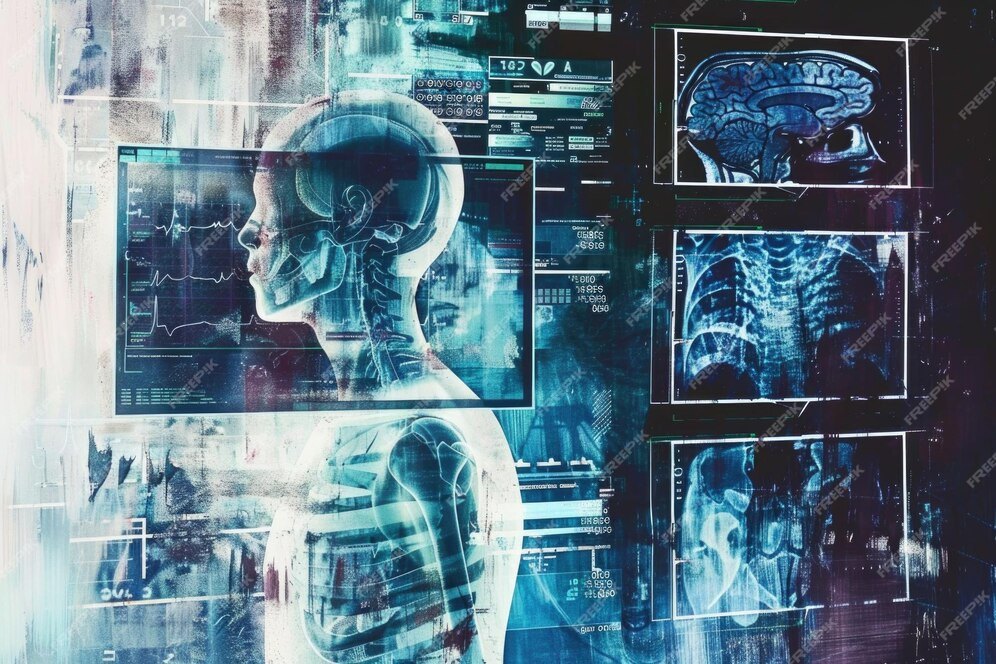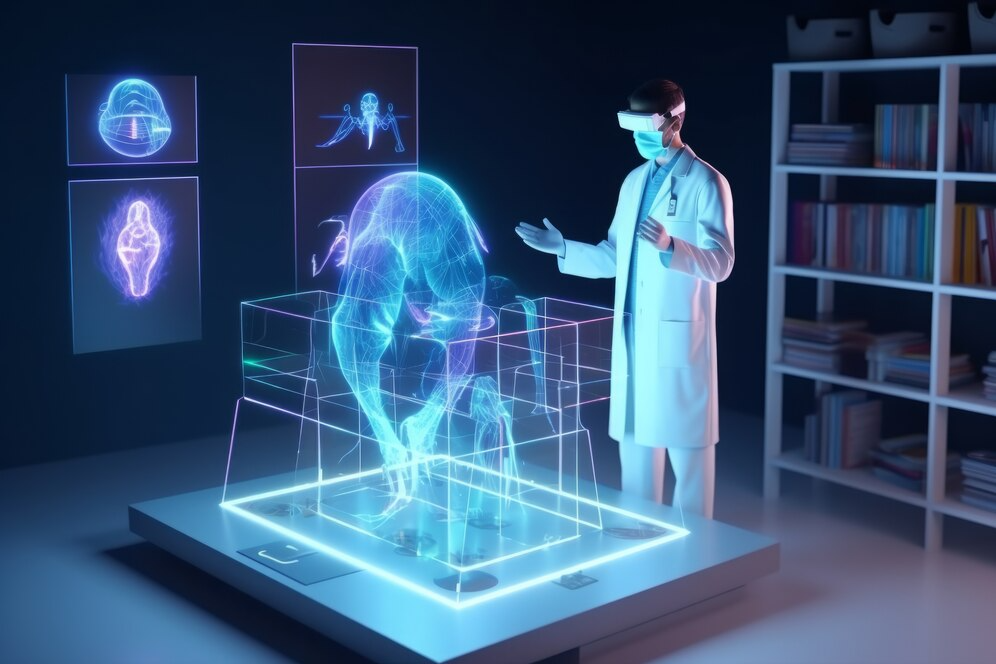- AI technology uses complex algorithms and computing power to quickly and accurately analyse large amounts of data, helping radiologists interpret CT and MRI images, identify patterns and abnormalities that may have been overlooked, and improve the speed and reliability of the diagnostic process.
- AI systems optimise radiologists’ workflow by automatically performing initial reviews of medical images and flagging potential problem areas, prioritising the most critical cases, providing real-time analysis, and reducing repetitive and time-consuming tasks.
- Aidoc Medical uses deep learning and computer vision technology to analyse medical images.
OUR TAKE
Aidoc Medical’s AI technology streamlines radiologists’ workflows, improves diagnostic efficiency and accuracy, and positively impacts the quality of patient care by analysing and prioritising abnormal results in real-time.
–Alaiya Ding, BTW reporter
Aidoc Medical’s AI technology simplifies the workflow of radiologists and significantly improves diagnostic efficiency and accuracy, especially in emergency and trauma settings, facilitating rapid diagnosis and timely intervention. This system scans CT and MRI images, detects and marks abnormalities, and prioritises abnormal results through an integrated alarm system to ensure that urgent cases are handled quickly and improve patient outcomes.
Introduction of medical AI
By automating routine tasks and providing real-time analysis, AI technology enables healthcare professionals to focus more on patient care and less on administrative burdens. Artificial intelligence in medicine is the use of machine learning models to help process medical data and give medical professionals important insights. This feature explores the role of AI in medical imaging, highlighting specific applications such as Aidoc Medical’s innovative imaging AI technology.
Also read: Holoeyes Secures 400 Million Yen to Expand Medical Virtual Reality

AI features: Simplify workflow and improve diagnosis efficiency
Application of AI technology in medical imaging
AI technology in medical imaging uses complex algorithms and computing power to quickly and accurately analyse large amounts of data. The main application of AI in this field is to assist radiologists in interpreting medical images, such as CT scans and MRIs. By identifying patterns and abnormalities that may be missed by the human eye, AI systems enhance the diagnostic process, making it faster and more reliable.
Optimising radiologists’ workflow
AI systems optimise radiologists’ workflow in a number of ways. First, they automate the initial review of medical images, marking potential areas of concern for further examination. This prioritisation helps radiologists focus on the most critical cases first. Second, AI provides real-time analysis, especially in emergency settings where time is of the essence. Finally, by handling repetitive and time-consuming tasks, AI enables radiologists to engage in more complex diagnostic and interventional procedures, thereby improving overall efficiency.
Also read: AI helps with early heart failure detection
Also read: DeepMind’s new AI can predict structure of ‘all life’s molecules’
My past experience has convinced me that this technology has the potential to greatly improve the efficiency and accuracy of our radiologists, helping us perform at our best, which is a revolutionary win for both physicians and patients.
Dr. Barry Pressman
Application example: Aidoc medical’s medical imaging AI technology
Example overview
Aidoc Medical is a well-known company in the field of medical AI, known for its advanced imaging technology. Founded by Elad Walach, Michael Berginsky, Guy Reiner and Gal Yaniv, the company is committed to improving the accuracy and efficiency of diagnosis through advanced AI solutions. Aidoc’s products are CE-certified and widely used to analyse CT and MRI scans, helping medical professionals to detect key findings in a timely manner.
Technical description
Aidoc’s technology uses deep learning and computer vision for medical imaging analysis. The system scans CT and MRI images to detect and mark abnormalities, greatly reducing the time required for manual review. Through an integrated alarm system, AI prioritises abnormal results, alerting doctors to potential problems that require immediate attention. This proactive approach ensures that urgent cases are handled quickly and improves patient outcomes.
Clinical application and evaluation
In early 2017, Aidoc’s AI technology was clinically tested at Cedars-Sinai Medical Center, a leading medical institution, to evaluate its effectiveness in improving diagnostic efficiency and accuracy. Dr. Barry Pressman, director of imaging, highly praised the technology. He pointed out that Aidoc’s AI system is able to simplify workflows and significantly improve diagnostic accuracy. Dr. Pressman said:
“In our clinical trial, Aidoc’s technology has demonstrated its ability to streamline radiologist workflow, as abnormal scans can be prioritised and examined more carefully. My past experience has convinced me that this technology has the potential to greatly improve the efficiency and accuracy of our radiologists, helping us perform at our best, which is a revolutionary win for both physicians and patients.”
In the clinical trial, Aidoc’s AI system analysed 1,446 head CT scans for the presence of intracranial hemorrhage (ICH). Reviewing neuroradiologists determined that 212 of these were positive for ICH, a prevalence of 14.7%. Specifically, the prevalence of ICH was 6.3% in the emergency department cohort, 30.3% in hospitalised patients, and 13.4% in outpatients. The Aidoc system flagged 20 CT scans that were reported as negative, 10 of which were false positives. One flag was unclear because a hyperdense lesion could be associated with a small contusion or hyperdense lesion. Neuroradiologists considered nine of these to be positive for ICH, and Aidoc detected two missed ICHs.
In addition, Adil Zia commented: “Our institution’s imaging and reporting operations have a relatively short reporting time and low miss-rate. Any improvements, as a result of AI implementation, would provide further evidence to support the use of AI technology in radiology to increase radiologists’ efficiency and improve patient care.”
Aidoc also collaborated with Dr. Paul J. Chang of the Chicago Medical School. Dr. Chang recognised Aidoc’s AI technology and believed that it provided real value in the work of radiologists. He commented: “Aidoc combines clinically relevant deep learning and deeply integrated workflows, making it one of the few AI companies that can provide real value to radiologists.”
Dr. Chang further pointed out that Aidoc’s AI system not only improves diagnostic efficiency, but also significantly improves diagnostic accuracy, which is particularly evident in the analysis of acute findings where time and accuracy are critical.
Actual effects and advantages
Aidoc’s AI technology has shown the effect of improving diagnostic accuracy and reducing physician workload. It is particularly useful in emergency and trauma settings, where rapid diagnosis is critical. The system’s real-time analysis function can comprehensively detect abnormalities in head and neck images, accelerate the diagnostic process, and allow timely intervention.
By prioritising the marking of key findings, Aidoc’s AI ensures that no important details are missed, thereby improving patient safety and quality of care. This not only increases the overall efficiency of the radiology department, but also improves clinical outcomes through faster and more accurate diagnoses.
Aidoc combines clinically relevant deep learning and deeply integrated workflows, making it one of the few AI companies that can provide real value to radiologists.
Paul J. Chang

Commercialisation prospects
Aidoc is actively testing its AI technology in the United States and working towards FDA approval. The company’s founders, especially Elad Walach, are committed to “saving lives by saving time.” By simplifying the diagnostic process and improving accuracy, Aidoc’s AI is expected to revolutionise medical imaging and make it an important asset in modern healthcare. “Based on the results of our clinical trials with Aidoc, we firmly believe that their solution will greatly enhance our clinical workflow,” said Bram Stieltjes, MD, Vice President of Research at the University Hospital of Basel, Switzerland.
Aidoc’s commercialisation prospects are bright as the demand for efficient and accurate diagnostic tools continues to grow. With its effectiveness in clinical settings and continued expansion of regulatory approval efforts, Aidoc is expected to become a leading provider of AI-driven medical imaging solutions.
Also read: What is clinical data management?
Also read: Sonic Healthcare Limited: A beacon of medical excellence
Pop quiz
In early 2017, Aidoc’s AI technology was clinically tested at which leading medical institution?
A. Mayo Clinic
B. Cleveland Clinic
C. Cedars-Sinai Medical Center
D. Johns Hopkins Hospital
The correct answer is at the bottom of the article.
Any improvements, as a result of AI implementation, would provide further evidence to support the use of AI technology in radiology to increase radiologists’ efficiency and improve patient care.
Adil Zia
Revolutionising medical imaging with real-time analysis
Aidoc Medical’s AI technology demonstrates the huge potential of artificial intelligence in medical imaging diagnosis. By analysing and prioritising abnormal results in real-time, the Aidoc system not only increases radiologists’ productivity, but also significantly improves diagnostic accuracy and patient quality of care. Clinical trials at Cedars-Sinai Medical Center and Chicago Medical School have proven that Aidoc’s AI technology can significantly simplify workflows, improve diagnostic efficiency, and reduce doctors’ workload. The successful application of this technology marks the revolutionary progress of AI in the medical field and points the way for future medical practice.
The company’s founder, Elad Walach, and others are committed to “saving lives by saving time.” With the continuous development of technology and the expansion of applications, the medical industry will usher in a more efficient and accurate future. Aidoc’s commercialisation prospects are very bright and it is expected to become a leading provider of AI-driven medical imaging solutions.
The correct answer is C, Cedars-Sinai Medical Center.
